
The Gaza Strip, or simply Gaza, is a Palestinian enclave on the eastern coast of the Mediterranean Sea. It borders Egypt on the southwest for 11 kilometers (6.8 mi) and Israel on the east and north along a 51 km (32 mi) border. The Gaza Strip and the West Bank are claimed by the de jure sovereign State of Palestine.
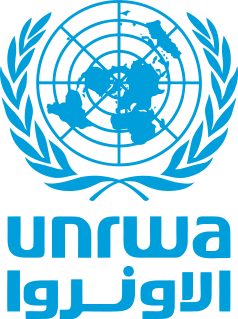
The United Nations Relief and Works Agency for Palestine Refugees in the Near East (UNRWA) is a UN agency that supports the relief and human development of Palestinian refugees. UNRWA's mandate encompasses Palestinians displaced by the 1948 Palestine War and subsequent conflicts, as well as their descendants, including legally adopted children. As of 2019, more than 5.6 million Palestinians are registered with UNRWA as refugees.

Palestinian refugees are citizens of Mandatory Palestine, and their descendants, who fled or were expelled from their country over the course of the 1947–49 Palestine war and the Six-Day War. Most Palestinian refugees live in or near 68 Palestinian refugee camps across Jordan, Lebanon, Syria, the West Bank and the Gaza Strip.
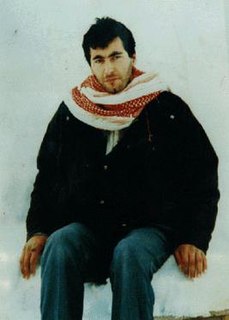
Yahya Abd-al-Latif Ayyash was the chief bombmaker of Hamas and the leader of the West Bank battalion of the Izz ad-Din al-Qassam Brigades. In that capacity, he earned the nickname the Engineer. Ayyash is credited with advancing the technique of suicide bombing in the Israeli-Palestinian conflict. The bombings he orchestrated caused the deaths of approximately 90 Israelis, many of them civilians. He was assassinated by Shin Bet on 5 January 1996.

Levantine cuisine is the traditional cuisine of the Levant, known in Arabic as the Bilad al-Sham, which covers a large area of the Eastern Mediterranean. It is found in the modern states of Cyprus, Jordan, Lebanon, Israel, Palestine, Syria, as well as in northern Iraq and parts of southern Turkey near Adana, Gaziantep, and Antakya. Conversely, some of the dishes listed below may have early origins in neighboring regions, but have long since become traditions in the Levant.

Musakhan is a Palestinian Arab cuisine dish, composed of roasted chicken baked with onions, sumac, allspice, saffron, and fried pine nuts served over taboon bread. It is also known as muhammar. It is often considered the national dish of Palestine. It also remains a very popular dish within the Arab triangle, areas near Iksal and Sandala villages, and Israeli Druze and Israeli Arabs in North Israel. It originated in the Tulkarm and Jenin area.
International aid has been provided to Palestinians since at least the 1948 Arab–Israeli War. The Palestinians view the aid as keeping the Israeli–Palestinian peace process going, while the Israelis claim that it is used to fund terrorism and removes the imperative to Palestinians to negotiate a settlement of the Israel-Palestinian conflict. The Palestinian National Authority (PA), within the West Bank and Gaza Strip, receives one of the highest levels of aid in the world. Aid has been provided to the Palestinian Authority, Palestinian non-governmental organizations (PNGOs) as well as Palestinian political factions by various foreign governments, international organisations, international non-governmental organizations (INGOs), and charities, besides other sources.

A bhaji, also known as Onion Bhaji, is an Indian appetiser that is made from spicy hot vegetable, sometimes fried similar to a fritter, originating from the Indian subcontinent, with several variants. It is a popular snack food in Kerala, Tamil Nadu, Goa, Maharashtra, Gujarat, Andhra Pradesh, Telangana, Karnataka, Assam, West Bengal and Odisha in India, it is also very popular in Pakistan and Trinidad and Tobago and can be found for sale in street-side stalls, especially in tapris and dhabas.

Pulpí is a municipality of Almería province, in the autonomous community of Andalusia, Spain.

Palestinian cuisine consists of foods from or commonly eaten by Palestinians, whether in Palestine, Israel, Jordan, refugee camps in nearby countries, or by the Palestinian diaspora.
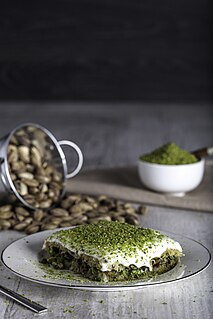
Knafeh is a traditional Middle Eastern dessert made with spun pastry called kataifi, soaked in sweet, sugar-based syrup, and typically layered with cheese, or with other ingredients such as clotted cream, pistachio or nuts, depending on the region. It is popular in the Arab world, particularly Egypt and the Levant, being considered the most representative and iconic Palestinian dessert. Variants are also found in Turkey, Greece, and the Balkans.

Jordanian cuisine is a traditional style of food preparation originating from, or commonly used in Jordan that has developed through centuries of social and political change.
The Hamas–UNRWA Holocaust dispute erupted on 31 August 2009 following a perception in the Gaza Strip that the United Nations Relief and Works Agency (UNRWA) planned to include a course on human rights that speaks about the Holocaust in the eighth-grade curriculum of preparatory schools it runs in the territory. Militant Islamic movement Hamas, which controls the Gaza Strip, protested, calling the Holocaust "a lie made up by the Zionists" and demanding the removal of the offending content from the curriculum. Some officials of the United Nations agency initially responded by denying that it teaches the subject of the Holocaust in its schools or that it plans to teach it in its new curriculum. This denial drew criticism from various groups and individuals.
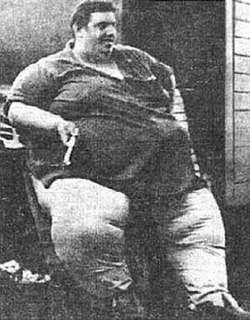
Jon Brower Minnoch was an American man who, at his peak weight, was the heaviest human ever recorded, weighing 1,400 lb.
Tourism in the Palestinian territories is tourism in East Jerusalem, the West Bank, and the Gaza Strip. In 2010, 4.6 million people visited the Palestinian territories, compared to 2.6 million in 2009. Of that number, 2.2 million were foreign tourists while 2.7 million were domestic. In the last quarter of 2012 over 150,000 guests stayed in West Bank hotels; 40% were European and 9% were from the United States and Canada. Major travel guides write that "the West Bank is not the easiest place in which to travel but the effort is richly rewarded."
Meet me in the year 2006 in the Palestinian territories.

Edward Stephen Hall is a British former professional strongman. He won the World's Strongest Man 2017 competition. Hall has also won the UK's Strongest Man and England's Strongest Man competitions multiple times.
Healthcare in the State of Palestine refers to the governmental and private healthcare providers to which residents in the claimed territory have access. Since 1967, there have been improvements in the access to healthcare and the overall general health conditions for residents. Advances in training, increased access to state-of-the-art medical technology, and various governmental provisions have allowed per-capita funding to increase, and therefore the overall health of residents in the region to increase. Additionally, the enhanced access to and funding from international organizations like the World Health Organization, the United Nations, the Palestinian Ministry of Health, and the World Bank Education and Health Rehabilitation Project have contributed to the current state of affairs within the healthcare segment of the Palestinian territories. However, while many efforts at enhancing the state of health affairs within the Palestinian territories have shown improvement, there are still efforts to be made. Continued efforts to recognize and address the geopolitical barriers will be necessary in order to continue to have significant success in this field. Finally, addressing demographic trends within the region, like differing pregnancy rates and mortality rates, will be necessary to enhance the state of health affairs that the Palestinian territories face. This article addresses each of these issues in more explanatory detail, giving an overview of the major legal and ethical developments in healthcare within the Palestinian territories, and discussing further obstacles that the region faces due to infrastructural and political barriers.
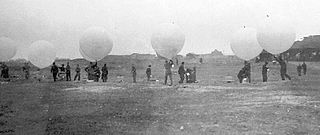
An incendiary balloon is a balloon inflated with a lighter-than-air gas such as hot air, hydrogen, or helium, that has a bomb, incendiary device, or Molotov cocktail attached. The balloon is carried by the prevailing winds to the target area, where it falls or releases its payload.













